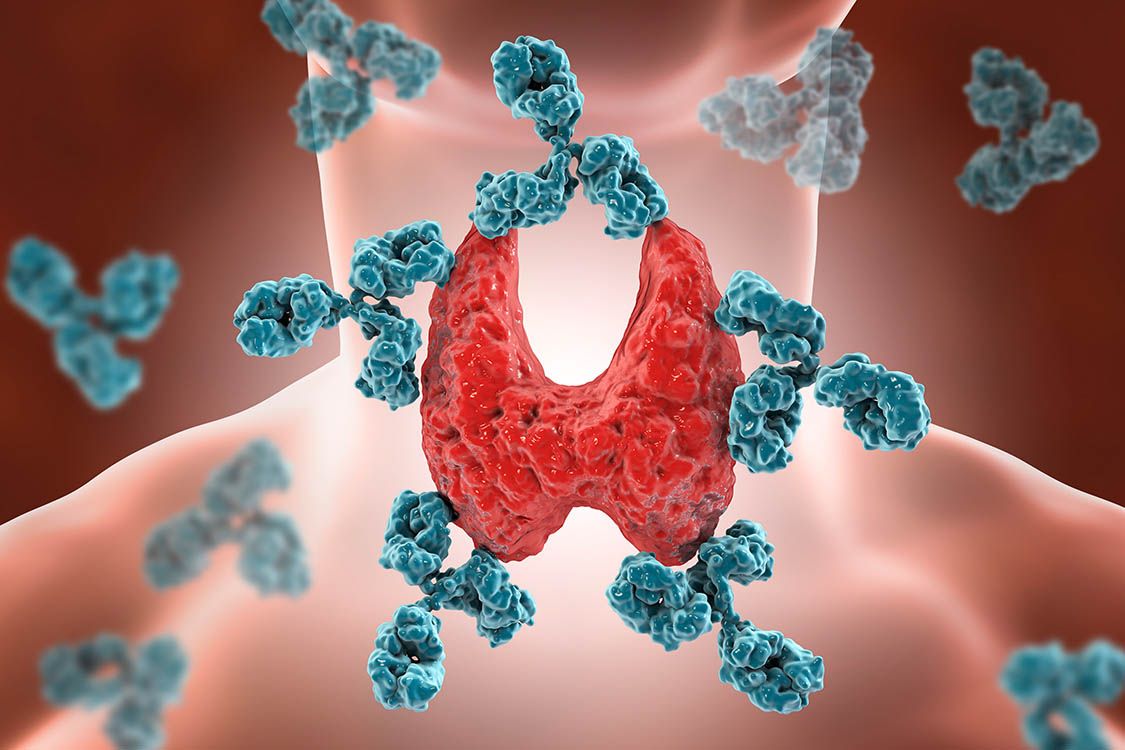The generic term "autoimmune disease" may not be particularly familiar. But almost everyone knows someone who is affected by one. Here we briefly present some of the most common, but also very rare autoimmune diseases.
1. diabetes mellitus type I
Commonly known as “diabetes”, diabetes mellitus is a chronic metabolic disease. Too much sugar is constantly circulating in the blood, which damages blood vessels and organs over time. The reason for this is either impaired insulin production or insulin resistance. The more common form is type 2 diabetes, a classic disease of civilization, favored by obesity. Type 1 diabetes mellitus, on the other hand, is an autoimmune disease in which all insulin-producing cells in the pancreas are destroyed by the body’s own defenses. Only about 5 in 100 people with diabetes suffer from this type, with women and men being equally affected. They have to regularly inject the hormone insulin throughout their lives to keep their elevated blood sugar levels in check. Modern, sensor-supported insulin pumps, such as those offered by the USZ, can now make life much easier for those affected.
To the consultation2. multiple sclerosis
Multiple sclerosis (MS) is an autoimmune, chronic inflammatory disease of the central nervous system. Inflammatory cells, so-called T and B lymphocytes, destroy nerve cells, especially the myelin sheathing of the nerve fibers. This is responsible for the rapid transmission of electrical impulses via the nerve tracts. If the myelin is damaged, nerve conduction is slowed down or even temporarily interrupted. The typical symptoms such as sensory disturbances, visual disturbances or muscle paralysis occur. Multiple sclerosis is the second most common neurological disease after epilepsy.
Women more frequently affected than men
Around 10,000 sufferers live in Switzerland. It is usually discovered between the ages of 20 and 40, with women being affected three times more frequently than men. At the USZ, patients with MS are treated in a specialized center. The aim is to provide optimum interdisciplinary and interprofessional care. Accordingly, the service includes an MS nursing consultation in addition to the medical consultation.
Multiple Sclerosis Center3. hashimoto’s thyroiditis
This form of thyroid inflammation, named after a Japanese doctor, occurs because the body’s own immune system mistakenly targets thyroid cells. Almost one in ten people in Central Europe is affected, women five times more often than men. Hashimoto’s” often only occurs in adulthood, usually from the age of 30, and remains undetected for a long time because there are practically no early symptoms.
Cause unknown
The thyroid gland becomes inflamed, the cells are destroyed over time and hypothyroidism develops. However, the inflammation itself does not need to be treated. Instead, hormone replacement therapy is used to treat the symptoms. The triggers of this autoimmune disease are still unknown. However, because Hashimoto’s thyroiditis occurs more frequently in some families, genes could play a role. In addition, an infection with certain bacteria or viruses seems to trigger the disease.
4. myasthenia gravis
In this disease, the signal transmission from the nerve to the muscle is disturbed. The body’s own defense system attacks the receptors at the nerve endings so that the signals for muscle contraction decrease. As a result, individual muscles or muscle groups in those affected are alternately weakened or can no longer be moved at all.
Occurrence and frequency
Myasthenia gravis often first manifests itself in the face, especially in the eyes, with drooping eyelids or diminished facial expressions. If the muscle weakness spreads to the chewing and throat muscles, swallowing difficulties occur. Arms and legs can also be affected. Myasthenia gravis becomes life-threatening if the respiratory muscles are impaired. The disease cannot be cured; therapy is aimed at alleviating the symptoms. On average, around 0.25 to 2 per 100,000 people contract the disease every year. The disease can occur at any age, but only around ten percent of sufferers are younger than 16.
5. lupus erythematosus
In systemic lupus erythematosus (SLE ), normal cell disposal is disrupted. The disease affects women in nine out of ten cases and usually breaks out between the ages of 20 and 30. The exact causes are not known, but there are factors that favor its development. These include a genetic predisposition and viral infections, but also nicotine consumption. SLE usually progresses in relapses and cannot be cured. It can affect any organ. The aim of therapy is therefore to prevent organ damage and alleviate symptoms. Typical is the so-called butterfly exanthema, a symmetrical reddening of the cheeks, bridge of the nose and forehead. Other symptoms include pronounced tiredness (fatigue), joint pain, hair loss and mouth ulcers. In more than half of those affected, the kidneys are affected. Treatment in a specialized center is important for this complex disease. The USZ offers an interdisciplinary consultation hour and a special consultation hour for patients with kidney disease.
To the consultation